Celibacy among Polish clergy began to be introduced in the 12th century. It was going like December. Even two centuries later, many priests still firmly believed that they were not only allowed to have intercourse with married women and virgins.
In the times of the first Piasts, no one was interested in the marital status of priests. And so it remained until the times of Walter of Malonne, who came from the territory of today's Belgium. In 1148 he took part in the Synod of Reims, where the decisions of the Second Lateran Council concerning the disenfranchisement of priests were confirmed. When Walter became the bishop of Wrocław a year later, he took action in this matter. What a great "raisin" among the Polish clergy is best evidenced by the information from Lives of Wrocław Bishops where he was praised for his utterly remarkable perseverance in the celibate state.
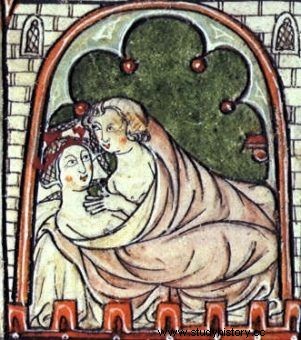
In the early Middle Ages, priests married freely. And they weren't white marriages at all.
Anyway - he did not achieve miracles, and priests got married and made children as always.
I will happily ditch my wife
At the end of the 12th century, the papacy tried to bring order to the marriages of priests in Poland. In 1197, the legate Peter of Capua appeared in this case. Earlier he was in the Czech Republic, where he wanted to establish celibacy of the clergy - ended up with the furious priests chasing the papal envoy . According to the chronicler Jan Długosz, it was completely different in Poland, and the marriage of priests was carried out with enthusiasm. As historian Adam Krawiec writes:
we are unable to determine if his account is from some missing source or is a fantasy. It is not known how the clergy actually behaved. Probably Peter's decisions were not accepted with enthusiasm, but no open protests were initiated either. In the provinces, the new regulations were simply ignored and old customs were adhered to.
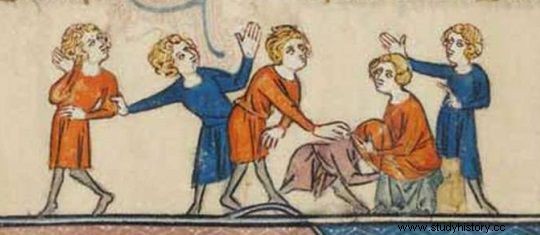
There is nothing like medieval moral freedom…
Not only in the provinces, one can add - because, for example, the bishop of Włocławek Ogierz, elected in 1198, lived in a marriage without any embarrassment. Only around 1217, during the Synod of Kamień under the leadership of the Archbishop of Gniezno, Henryk Kietlicz, priestly celibacy was introduced as a universally binding principle.
He stripped them of virginity and honor
After 1217, clerical marriages were no longer fought, but with concubinages. The late Middle Ages approach to celibacy is a good reflection of what a certain Valentin said. Although he was a parish priest not in Poland, but in Czech Zbrasław, one can safely assume that the same customs prevailed on our side of the border. Well, according to the aforementioned parish priest the principle of celibacy should be understood only as ... a prohibition of intercourse with married women and virgins.
Even this rule turned out to be far too restrictive for many. In 1439, two women from Pobiedziska accused the local parish priest Bernard of "depriving them of virginity and veneration" . He lived with them for a year and 6 months, respectively, and in addition lived indecently in the presbytery with a married woman .
He showed up naked, holding his penis with his hand
In 1479, a similar report made life difficult for Piotr Wigand, the parish priest from Ostrołęka. It was established that he had an affair with the wife of the head of nearby Biskupice. In turn, in 1497, Father Mateusz from Kobielice appeared before the church court in Włocławek. Not only was he having an affair with a married woman, but he sent the lords to beat her husband, Piotr Kurek's peasant. He showed no fear before the bishop. On the contrary. He assured: "I will appeal to Rome and the bishop will be damned, and I will be the parish priest here in Kobielice".
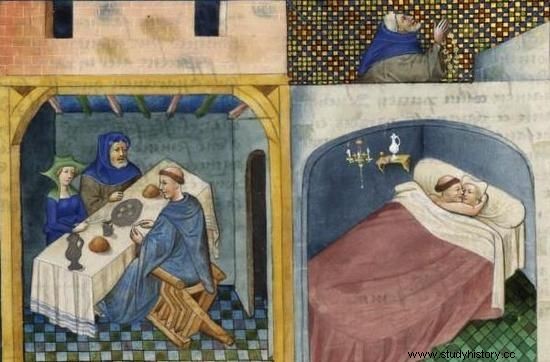
The husband prays while the lecherous monk spit on his horns.
In 1442, in turn, Proper, a parish priest from Rzeszotarzów, was tried in Gniezno. The list of accusations included:"constant drunkenness, blasphemy, intercourse with a certain Schindawa and her daughters, public showing up naked, holding your hand for a member ”.
The mistress ordered to cut up
Similar moral dirt often came to light on the occasion of committed or planned crimes. History remembered, for example, the case of a tailor from Włocławek, Jan Cieślicz. In 1497 he made efforts to divorce his wife. He had good reasons. The woman tried to poison him with toadstools. As if that was not enough, she persuaded one of her lovers, priest Jan of Chodecz, to kill her husband with a sword.
Jakub Bogiewski, the castellan and starost of Ciechanów, did not have time to demand the separation. His treacherous wife brought the plot to fruition. In 1466, Jacob was chopped into pieces by his half-wife's lover, chaplain Jan Pieniążek. The murderer was caught, but he spent only three and a half years in prison. It didn't even break his career. At the end of his life, he held the lucrative position of a Gniezno canon.
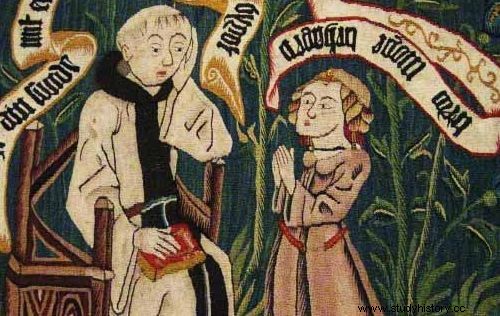
Pensive parson. Was he devising a crime plan in his head?
Bishop sets an example
The clergy succumbing to lust were punished with a fine, the loss of benefits, and sometimes imprisonment. Much depended on the diocese and the severity of the hierarchy who led it - e.g. in Lviv the sentences were milder than in Greater Poland . The bishop of Włocławek, Piotr of Bnin, in the instructions for the parish inspectors, even asked the question: "Does the parish priest waste church property, for example, buying clothes for concubines or giving off daughters to marriages?" .
On the other hand, there were also church dignitaries who gave a very dubious example to those around them. The chronicler Janko of Czarnków, himself a clergyman, wrote about the Poznań bishop Mikołaj of Kórnik (died 1382) that:
For more than two years he suffered from cancer in the genital area, but despite the doctors' ban, it did not stop him from having sex with girls > until the fever of Thursday began to shake him well, and she had not abandoned him since.
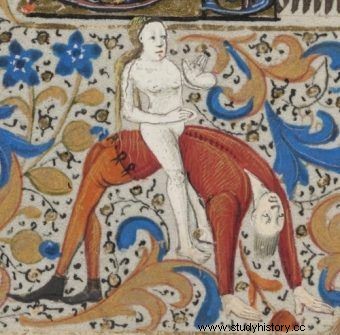
The Middle Ages were a much more liberated era than you might think…
Better known is the example of the bishop of Kraków Zawisza of Kurozwęki (died 1382). He tried to get to the poor peasant's daughter, but he was not going to buy his own child - what's more, he hid the girl on a grain stack. The bishop did not give up, pulled up the ladder from which he was thrown by the host, and after a few months he died of his injuries.
The really effective fight against the erotic antics of priests was not undertaken until the 16th and 17th centuries. Due to the Counter-Reformation, priestly concubinages did not completely disappear, but they ceased to be an open matter. And in fact, only from that moment on can one speak of celibacy in Poland. As you can see, the rule, the abolition of which is more and more often discussed in Catholic circles, on the Vistula River is a kind of custom novelty ...
Sources:
Basic:
- Krawiec Adam, Sexuality in Medieval Poland , Poznań 2000.
Complementary:
- Brożyna Martha, rec. Adam Krawiec, Sexuality in Medieval Poland, Poznań 2000, "Mazowieckie Studia Humansityczne", 2011, vol. 7, no. 1.
- Fijałek Jan, Establishing the chronology of the bishops of Włocławek , Krakow 1894 (copy from the "Scientific and Literary Guide").
- Gręźlikowski Janusz, Synods of the Włocławek diocese before the Council of Trent , "Canon Law", vol. 54, 2011, No. 1-2.
- Grochowina Michał, The clergy's commitment to celibacy according to the 1983 Code of Canon Law , "Church and Law" 2012, no. 1.
- Chronicle of Janek from Czarnków , crowd. Józef Żerbiłło, Krakow 2001.
